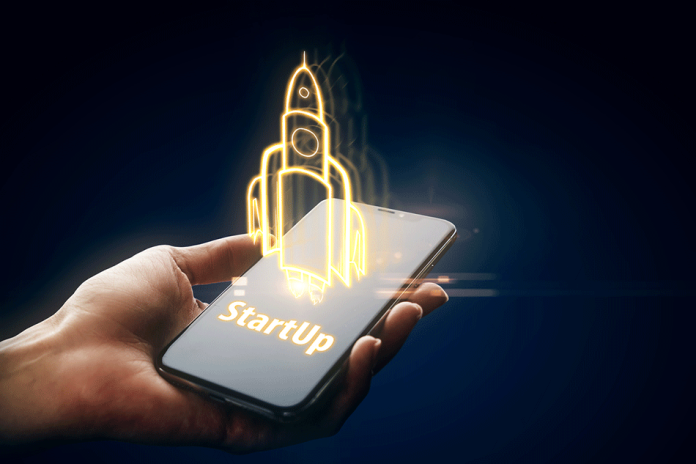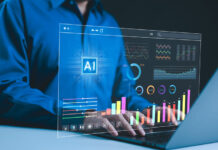One of the critical components of running a startup is cornering the market with a unique and innovative value proposition. If you are an experienced startup owner, you’re already aware of how challenging it can be to find business ideas that stand out from the crowd and are appealing to investors. Some of the most eye-catching technologies out there right now are artificial intelligence applications. How can you come up with an AI-based business idea that is feasible, scalable, and profitable?
In what follows, we’ll discuss AI and ML technology applications tested in practice. No matter what industry you’re from, this article will help you see opportunities to apply technologies to your startup to gain a competitive advantage in the market and impress investors.
Smart Recommendations: Suggestions Powered by AI
Using artificial intelligence to suggest content or products to users is nothing new. You have likely seen it in a variety of contexts, such as streaming services, eCommerce platforms, and social networks. Businesses leverage the power of AI smart suggestions to make their lives easier and to improve user loyalty. For example, YouTube’s algorithm helps to maintain users for a longer period of time on their website. In turn, this leads to more ads being watched, increasing the company’s revenue.
Smart recommendations are interesting because there are a wide range of opportunities to apply the technology in unique ways. Algorithmic and formulaic approaches are just the tip of the iceberg. Some are more focused on modeling, such as collaborative filtering. Content-based recommendations are another example. Regardless of the method chosen, flexibility is needed in order to allow for scalability.
Natural Language Processing and Smart Suggestions
An increasingly common approach in smart recommendations is natural language processing (NLP). Unlike other methods of suggesting content to users, NLP-based smart recommendations don’t require the data to be heavily structured or restricted. It is far more flexible in terms of how text is arranged and formatted. For example, an AI model can review a user’s job search profile and find jobs similar to their experience and interests.
There are a number of ways to achieve this:
- Text similarity: when comparing two texts, an NLP model can assign a coefficient of similarity. By measuring the value of that coefficient, the model can find texts that are most similar to the original that may be relevant to the user.
- Named Entity Recognition (NER): by identifying important details like locations, organizations, people, and more (called ‘entities’), the AI model can identify relevant content based on keywords that may be valuable to the user. It’s important that the model understands the context of these entities, as it may make mistakes such as confusing an organization name with a location.
- Topic modeling: uses unsupervised learning to identify clusters or groups of similar words within the provided text. Based on this, you can more deliberately approach the selection of tags (keywords) in order not to duplicate content that is too similar in meaning and not to overload the user.
- Keyword extraction: similar to topic extraction and NER, keyword extraction examines the use of certain keywords.
- Text summarization: useful for larger texts, large bodies of text can be summarized into smaller portions to help compare relevant content.
NLP-powered smart recommendation systems can be useful for more than just online recruitment. The technology could also be used to suggest relevant news articles to readers. It could also be used to supplement existing product-recommendation systems. Therefore, having developed such a solution, you can confidently count on market demand.
Object Detection and Computer Vision
Visual inspection, warehouse automation, inventory management, security, and many other applications are possible with object detection technologies. These AI computer vision systems make it possible to automate tasks with great efficiency, which were previously only possible with the human eye.
Manufacturing & Supply Chain
There are a number of valuable use cases for object detection technologies in manufacturing such as quality assurance and visual inspection. Computer vision can detect defective products before they leave the factory floor. Object detection can also be used for object counting and location. Put together, AI systems can improve inventory accuracy and quality by minimizing human error. These same principles can also be applied to warehouses and other logistics centers.
Automotive
One of the most popular uses for object detection in the automotive industry is self-driving. However, this technology can also be used for other opportunities, like pedestrian detection and traffic flow optimization. When used with traffic cameras, pedestrians and vehicles can be identified and counted. This can help traffic management employees take action to reduce congestion in cities and other areas.
Retail
Object recognition can be used in retail settings as well. For example, cameras can detect zoning problems on shelves and alert staff that their shelves need to be maintained. AI can also track how customers interact with products and can detect when customers place objects in their cart. Amazon Go Grocery leverages this technology to the extreme, enabling customers to simply walk out of the store and have their card be charged for their visit.
Healthcare
Doctors can leverage the power of computer vision in medical images like CT scans, MRIs, and x-rays. By automating parts of the screening process, doctors can save time and be more efficient when diagnosing patients.
Safety and Surveillance
Security systems can be improved greatly with object detection systems. By automatically recognizing faces, deadly weapons, and unusual activity, AI can alert security personnel in real-time when unusual events are detected.
Other Consumer Products
Object detection can also be used in other consumer-level contexts. For example, at MobiDev, we developed an AI recycling application that enables users to scan objects with their phone camera. After scanning, the application can inform the user of what procedures to take to dispose of the scanned objects properly.
Facial Recognition
Similar in concept to object detection, facial recognition is a technology with enormous potential for startups to take advantage of. Face scanning is a viable biometric authentication option that can control access to devices, rooms, and other assets. Facial recognition can also be used for identification to know who was in a particular location or using a specific device and when. It can also be used for smart retail and personalized customer experiences.
How it Works: Face Scanning Software Workflow
Facial recognition is incredibly fast today thanks to advances in deep learning AI techniques. When creating face recognition software, engineers have to take a number of steps:
- Face detection: the software first needs to see if a face is present in the image. Once it finds a face for analysis, it can send that image to the server for database comparison.
- Data normalization & alignment: there will always be inconsistencies with captured images. Lighting may be different, the angle of capture might vary, and other variables may interfere with the process. Normalizing the data helps make it more reliable to compare faces with the database.
- Feature extraction: to better compare captured faces with the database, individual features of those faces need to be examined. A neural network can extract those facial features from images and compare them with existing information of human faces in the database.
- Identification: once data can be compared, the system can begin to identify the face.
- Response: once identified, the system can act automatically. For example, if an unauthorized person is detected in a secure area, a security team can be alerted so that they can respond to the potential threat.
GPT-Based Solutions
The rise of large language models like ChatGPT (a ‘generative pre-trained AI transformer’) have taken the world by storm. There are a mindboggling number of possibilities with ChatGPT model integration into applications. Here are a few that startup owners should be aware of:
Customer Support Chatbots
After seeing the capabilities of GPT-based chatbots to provide humanlike interactions, customer support is an obvious opportunity for this technology. Businesses have already begun to implement this technology in their own systems. For example, Wendy’s is testing an AI chatbot at a Columbus, OH location to assist drive thru customers.
Lead Generation
Chatbots can do more than just talk. Since GPT-based solutions are generative, they are remarkable productivity tools. Marketers can describe what kind of content they need written, or use them as idea generators. These chatbots can help marketers capture leads from their customers thanks to these features.
Data Analytics
With the right data at its disposal, GPT-based AI tools can analyze and describe complex data sets to data scientists. This will allow human workers to gain insights into valuable data faster.
Implementing GPT Models
There are two methods of implementing GPT-based AI tools:
- Utilizing an existing model: if the task you are looking to complete is simple, there may not be any need for modifications. An existing model may do just fine for your purposes.
- Tailor a model with custom datasets: if the task you are looking to complete is more complex, it may be necessary to fine tune the model with your own data. This can allow for personalization and higher quality responses.
AI application development can be challenging, but it can provide more unique experiences that can give a startup a competitive edge in the market.
AI Measurements
Another important use case for AI is measuring surfaces and objects. When more complex calculations are necessary, measurements of walls and other objects can be done quickly and efficiently by AI.
To use this technology effectively, AI-measuring tools are typically paired with augmented reality technology. The algorithm requires high quality cameras to capture the data necessary for measuring. Augmented reality software can also display 3D information for the user to understand what exactly they’re measuring as well.
Some use cases of this technology are:
- Obtaining quotes for decorative materials like wallpaper, floor tile, or paint.
- Creating accurate 3D floor plans for real estate companies.
- Estimating heating and cooling costs based on household surface area and volume.
- Determining how many Wi-Fi routers should be used in a home based on possible distance configurations between routers for whole-home coverage.
Given the right hardware, most if not all of these tasks can be completed by AR-capable smartphones. However, not all smartphones can do AR measurements. For example, only newer iPhones have the LiDAR hardware needed to achieve accurate room scanning and mesh creation.
How Will Your Startup Use AI?
Regardless of how you implement AI, the quality of your product is paramount to your startup’s success. If you can present investors with a high-quality and unique value proposition with artificial intelligence, you’ll be able to make a far better argument for their return on investment.
To do this, you’ll need a team of experienced AI software engineers to transform your idea into reality. The best engineers will know how to start your project in the best possible way and lead you to success step by step.
About the Author
 Anastasiia Molodoria is an AI Team Leader at MobiDev. She has strong math skills and experience in predictive modeling, natural language processing (NLP), data processing, and deep learning. She has successfully integrated AI solutions for startups and technology companies around the world. Speaker at AI webinars and conferences.
Anastasiia Molodoria is an AI Team Leader at MobiDev. She has strong math skills and experience in predictive modeling, natural language processing (NLP), data processing, and deep learning. She has successfully integrated AI solutions for startups and technology companies around the world. Speaker at AI webinars and conferences.

























![“Does Everyone Hear Me OK?”: How to Lead Virtual Teams Effectively iStock-1438575049 (1) [Converted]](https://www.europeanbusinessreview.com/wp-content/uploads/2024/11/iStock-1438575049-1-Converted-100x70.jpg)






